Transforming Conventional Televisions into Smart TVs
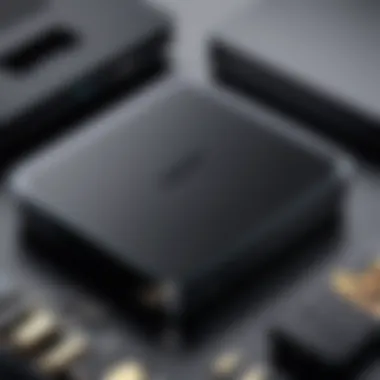
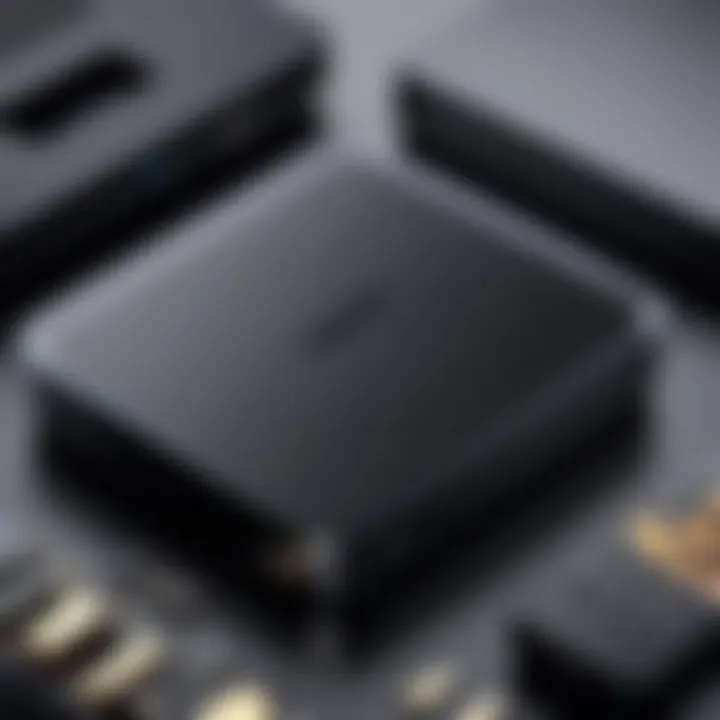
Intro
In today’s digital landscape, the ability to stream content seamlessly has transformed the way we interact with television. Traditional televisions, while classic, often lack the functionalities that modern viewers expect. Upgrading these conventional devices into smart TVs can open a world of possibilities, such as accessing streaming services, browsing the internet, and enjoying various applications. This transformation can be achieved with multiple methods, focusing on both hardware and software solutions.
This article aims to provide a comprehensive guide tailored for IT professionals and tech enthusiasts. It will detail the steps to enhance conventional display devices. From discussing the most effective tools and techniques to addressing potential compatibility issues, every aspect of this upgrade will be covered. Understanding these options is vital as it allows users to select an appropriate route based on their specific needs and technical expertise.
Intro to Smart TVs
In today's fast-paced technological landscape, the role of televisions has evolved significantly. No longer confined to merely displaying broadcast content, televisions have transformed into multifunctional devices that can connect to the internet and access a variety of digital services. This transition to smart televisions marks a pivotal move in how users engage with content on their screens.
Smart TVs integrate features that enhance user experience by providing access to streaming services, web browsing, and various applications. The introduction of these capabilities means that users can enjoy a broader range of entertainment options without the need for additional devices. For IT professionals and tech enthusiasts, this transformation is not just about enjoying the latest movies or shows; it also opens up discussions about system integration, network capabilities, and user interface design.
Moreover, the importance of smart TVs extends beyond entertainment. They reflect market trends where consumer preferences are shifting towards devices that offer connectivity and versatility. As consumers become more tech-savvy, the desire for products that merge functionality with ease of use has increased. Thus, understanding smart TVs is essential for those looking to enhance their home entertainment setups or for professionals aiming to advise clients on upgrading their systems.
Definition and Features of Smart TVs
A smart TV is essentially a television set that connects to the internet, allowing users to stream media, access apps, and utilize various online services. Key features include:
- Streaming Services: Access to popular platforms like Netflix, Hulu, and YouTube.
- Web Browsing: Allows for internet usage directly on the television.
- Voice Control: Many models support voice commands for hands-free operation.
- App Ecosystem: A range of applications can be downloaded to enhance functionality.
These features contribute to the user’s overall viewing experience and significantly differentiate smart TVs from conventional models.
Market Trends and Consumer Preferences
As smart TV technology has matured, certain trends have emerged in the market.
- Consumer Demand for Connectivity: Users increasingly expect their televisions to connect seamlessly to home networks and devices.
- Enhanced User Experience: The focus has shifted to intuitive interfaces, with many brands emphasizing ease of use through voice control and smart assistants.
- Content Availability: The ability to add multiple streaming subscriptions aligns with the growing preference for on-demand content.
Research indicates that more households are opting for smart TVs due to these preferences, driving manufacturers to innovate continuously. In such a competitive landscape, understanding these dynamics is vital for those looking to adapt their conventional setups.
Reasons to Convert to Smart TV
In today's digital age, the distinction between traditional television and smart televisions has become increasingly relevant. The transformation of a conventional TV into a smart model opens up a plethora of possibilities that can significantly enhance the viewing experience. This section will delve into three pivotal reasons why one might consider this conversion: access to streaming services, enhanced user experience, and future-proofing your setup.
Access to Streaming Services
The ascent of streaming platforms has revolutionized how content is consumed, making it a crucial consideration for any media enthusiast. Services such as Netflix, Hulu, and Amazon Prime Video have become integral to entertainment, offering a diverse array of content on demand. Conventional televisions typically lack the built-in applications and internet connectivity required to access these services directly.
By converting to a smart TV, users gain seamless access to this vast library of content. The integration of streaming services means not only can viewers watch movies and shows at their convenience, but they can also explore original programming that is exclusive to these platforms. Furthermore, many smart TVs support multiple streaming applications in one interface, simplifying the user experience significantly.
Enhanced User Experience
The user interface of smart TVs has evolved to provide an intuitive experience, allowing viewers to navigate content effortlessly. Unlike traditional TVs that primarily depend on external devices for viewing, smart TVs present a single platform where viewers can browse, search, and watch all their preferred media.
Various applications on smart TVs allow for personalized recommendations based on viewing habits. This means that users can discover new content tailored to their interests without having to scroll through endless lists. Features such as voice control, screen mirroring, and interactivity also enrich the user experience. This leads to a higher satisfaction level as viewing becomes more adaptable to individual preferences and lifestyles.
Future-Proofing Your Setup
Technology evolves rapidly and keeping up with advancements can be daunting. Smart TVs represent a forward-thinking solution to ensure that your setup remains relevant as new technologies emerge. The integration of updates and new features ensures that smart TVs can adapt to changing user needs.
Investing in a smart conversion now can safeguard against obsolescence. For example, as 4K content becomes more prevalent, smart TVs are often capable of supporting different video qualities and formats without needing hardware changes. Moreover, many manufacturers release software updates that introduce new apps and features, ensuring that your device will remain useful and efficient over time.
"Converting to a smart TV not only enhances the experience but also extends its relevance in an ever-changing technological landscape."
Evaluating Hardware Options
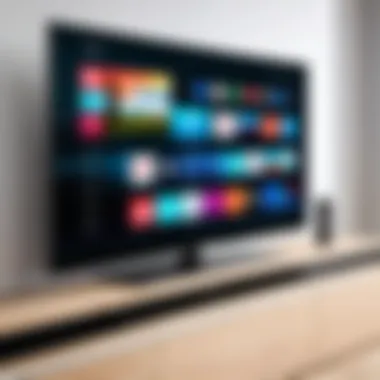
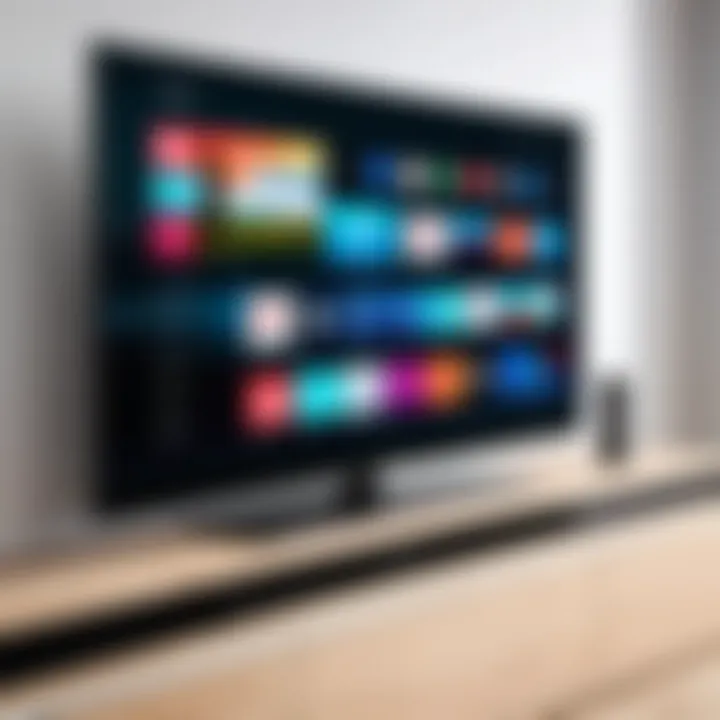
As one of the vital components in the process of converting conventional televisions into smart TVs, evaluating hardware options is essential. The right hardware not only determines the functionality of the conversion but also impacts the user experience. Different hardware solutions have diverse features and limitations. For instance, streaming devices, game consoles, and TV models with built-in smart features offer various pathways to enhancing traditional TV setups. Understanding these options enables consumers to make informed decisions that align with their specific needs and preferences.
Streaming Devices Overview
Roku
Roku stands out as a prominent choice for those wanting to enhance their TV experience. Its key characteristic is the extensive compatibility with a wide range of streaming services. Roku’s interface is user-friendly, making navigation straightforward for users of all technical levels. A unique feature of Roku is its versatile streaming capabilities, allowing access to channels like Netflix, Hulu, and more, all from one device.
The advantages of Roku include a comprehensive range of options tailored to different budgets and needs, as well as the ability to integrate various streaming choices without confusion. However, some users may find that its remote control lacks advanced features compared to competitors, which can be a minor disadvantage.
Amazon Fire Stick
Amazon Fire Stick is another favorite in the streaming device market. Its key characteristic lies in its integration with Amazon services, particularly Amazon Prime Video. Users can easily access content from their Amazon accounts and enjoy exclusive content. The unique feature of the Fire Stick is its Alexa voice control, which can significantly streamline command input.
The advantages of the Amazon Fire Stick include its seamless connection to Amazon services and the ability to control smart home devices. However, some may find the interface cluttered when compared to other devices, which could detract from the overall user experience.
Google Chromecast
Google Chromecast offers a different approach to transforming conventional TVs. Its key characteristic is the ability to cast content directly from smartphones, tablets, or computers. This flexibility makes it a popular choice among tech-savvy users. The unique feature of Chromecast lies in its minimalistic design, which involves no additional remote; everything is managed from a mobile device.
The advantages of using Google Chromecast include a broad compatibility with various streaming services and the convenience of using devices most people already own. Nevertheless, users may find it less user-friendly for those who prefer standalone remotes, which can be a downside for some audiences.
Game Consoles as a Smart TV Alternative
Game consoles like PlayStation and Xbox also serve as viable alternatives for converting a conventional TV into a smart television. These devices have built-in applications for streaming various content, providing users access to services such as Netflix and Spotify while also maintaining gaming capabilities. Their dual functionality is particularly appealing to those who wish to optimize their entertainment setup.
Though powerful, game consoles come with considerations. They tend to be pricier than dedicated streaming devices, and some may not require a console's gaming features. In contrast, for avid gamers, investing in a console provides the dual benefit of gaming and smart TV functionalities, making it a compelling choice.
Built-in Smart Features in TV Models
Many contemporary TV models come equipped with their own smart features, enabling viewers to enjoy streaming and internet connectivity without needing extra devices. The key characteristic of these TVs is their all-in-one design, which provides a streamlined user experience. Users can browse and download apps directly onto their television.
However, these built-in systems may lack the extensive content availability and updates that dedicated streaming devices frequently offer. Additionally, older models might not support the latest applications or features, potentially making upgrades necessary sooner rather than later.
Exploring Software Solutions
The move from traditional televisions to smart TVs is not solely a hardware issue. Software solutions play a crucial role in this transformation. This section discusses different software options available, their unique characteristics, and how they can enhance the functionality of conventional televisions. Emphasis will be on Android TV systems, custom firmware options, and how various applications can further extend the capabilities of a smart setup.
Android TV Systems
Android TV is a popular platform that caters to a wide range of users seeking to upgrade their viewing experience. The system provides a user-friendly interface combined with access to an extensive app ecosystem, making it an appealing option for many.
One significant advantage of Android TV is its integration with Google services. Users can access a variety of streaming apps like Netflix, Hulu, or YouTube seamlessly. Additionally, features such as Google Assistant bring voice-control capabilities to the TV, enhancing interactivity. This system also supports regular updates, ensuring that the performance remains smooth and security risks are minimized.
Custom Firmware and Operating Systems
Open Source Alternatives
Open source alternatives are an attractive choice for those looking to customize their smart TV experience. These systems allow users to modify and enhance the software to fit their unique needs. A key characteristic of open source firmware is its flexibility; developers and tech enthusiasts can adapt the software to run efficiently on various hardware.
One popular option is LineageOS, known for its broad device support and customization potential. While providing significant advantages, open source solutions may come with downsides as well. For instance, they might lack official support, leading to challenges in troubleshooting or updating.
Commercial Products
Conversely, commercial products like the Nvidia Shield offer a packaged solution that brings both performance and user support. These products typically come with a well-developed ecosystem, ensuring stability and ease of use.
What makes commercial solutions beneficial is their user-friendly setup and comprehensive customer support. This can be a decisive factor for users who may not have technical expertise. However, the cost of these products can be higher compared to open source alternatives, potentially limiting their appeal for budget-conscious users.
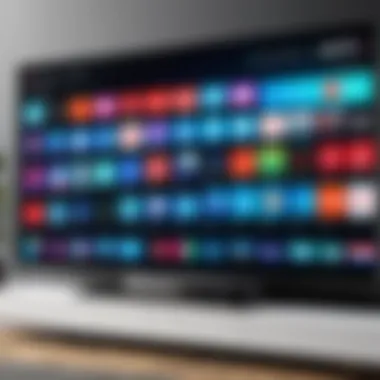

Using Apps to Add Functionality
Increasing the capability of a converted smart TV can be achieved through various applications. The app market is expansive, with numerous tools aimed at enhancing user experience. From media players to gaming apps, the choices are vast and varied.
By installing specific applications like Kodi, users can further personalize their viewing experience, integrating multiple sources of content. Many interfaces are intuitive, which means users can easily navigate through options to find their desired content.
In summary, exploring software solutions is essential for anyone looking to upgrade their conventional television. With platform options from Android TV systems to extensive app libraries, users have the flexibility to enhance their viewing experience significantly.
Installation and Setup Procedures
The transition from a conventional television to a smart TV involves a series of critical steps. Understanding the installation and setup procedures is essential. This phase determines how well your devices will work together and how effectively you can leverage the features of your upgraded system. Poor setup can lead to frustration, limited functionality, or a complete failure to utilize the smart capabilities you aimed to achieve. Proper installation maximizes your viewing experience and ensures longevity of your devices.
Connecting Streaming Devices
When converting a traditional TV into a smart TV, the first step often involves connecting a streaming device. There are several popular options available, such as Roku, Amazon Fire Stick, or Google Chromecast. Each device has unique features, but all typically offer similar functions, including access to an array of streaming services.
To connect a streaming device, follow these steps:
- Power Connection: Plug the device's power adapter into a wall socket.
- HDMI Port: Insert the streaming device into an available HDMI port on your TV. Ensure the port you choose is accessible and easy to reach.
- Source Selection: Turn on your TV and switch the input source to the corresponding HDMI channel. This is usually done through the TV remote.
Successful connection will allow you to interact with the device’s interface, often displayed on the TV screen. Testing the connection may require you to follow on-screen prompts before linking your streaming accounts.
Configuring Network Settings
Configuring the network settings is another vital step in the transformation. A reliable internet connection is necessary for streaming content. Here’s how to set this up:
- Wi-Fi Connection: Go to the settings on your streaming device. Select Wi-Fi and choose your network from the list of available connections.
- Input Password: Enter your Wi-Fi password. This step can be tricky due to the careful input required, so ensure accuracy.
- Test Connection: Most devices include an option to test your network connection. Use this to verify that everything is set up correctly.
Without proper network configuration, accessing online streaming and app functionalities will be impossible.
Updating Software and Apps
Finally, keep your system updated. Software updates enhance device performance and ensure security. Here’s how you can efficiently manage this:
- Automatic Updates: Enable automatic updates in the settings. This ensures that apps and the device software remain current without requiring manual intervention.
- Manual Updates: If you prefer manual control, navigate to the relevant section in the settings menu. From there, check for any available updates.
- App Store Management: Regularly check your device’s app store for updates to installed applications. Outdated apps may not function correctly and could affect your overall experience.
"Regular updates are essential to maintain the performance and security of your smart TV setup. Always be proactive in managing your software to enjoy a seamless streaming experience."
Maintaining an updated and well-configured system will undoubtedly enrich the smart TV experience and ensure you're capitalizing on modern viewing technologies.
Compatibility Considerations
In the process of transforming standard televisions into smart TVs, compatibility considerations play a pivotal role. Understanding the limits and requirements of current hardware ensures seamless integration of updates, apps, and streaming services. Failing to consider compatibility can result in wasted resources and unsuccessful installations. This section will delve into three critical areas: older TV models and their limitations, internet connectivity requirements, and choosing the right device for your setup.
Older TV Models and Limitations
Older television models often present a significant challenge when attempting to convert them into smart TVs. The age of the technology can impact compatibility with modern devices and software.
- Display Technology: TVs made before the era of HDMI ports generally use composite cables instead. This basic output may limit the functionality of most streaming devices.
- Resolution Limitations: Many older TVs operate at lower resolutions, such as 480p or 720p. With the rise of high-definition and 4K content, viewers may not experience optimal quality.
- Smart Features: Older models might lack built-in Wi-Fi, making it difficult to connect to the internet for streaming.
To overcome these limitations, users may have to prioritize upgrading hardware instead of merely adding a streaming device.
Internet Connectivity Requirements
A stable internet connection is essential for a successful transformation. Without it, smart features are unusable. The following points outline the primary requirements:
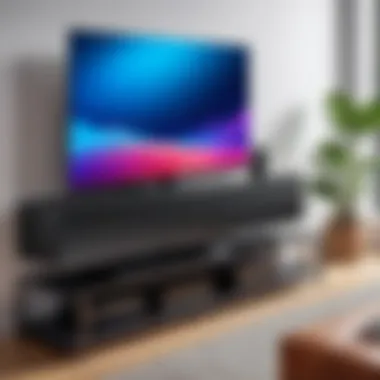
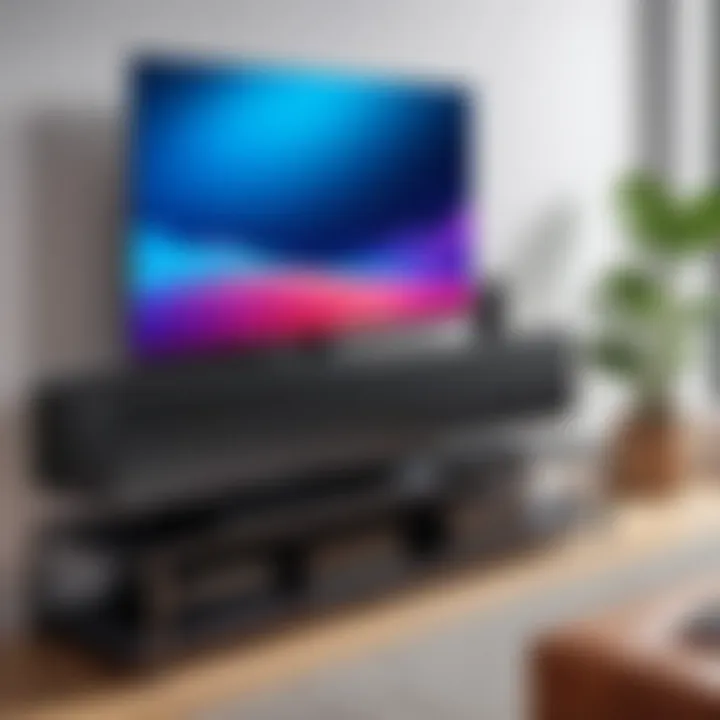
- Bandwidth: Streaming typically requires a minimum bandwidth of 5 Mbps for standard definition and upwards of 25 Mbps for 4K content. Users should assess their internet speed, which can be tested through various websites like fast.com.
- Router Capability: Ensure your router can handle multiple devices simultaneously without lag. Smart TVs also benefit from a dual-band connection, ideally 5GHz for better performance.
- Wired vs. Wireless: While many users prefer Wi-Fi, a wired Ethernet connection often provides greater stability and faster speeds. Depending on your setup, consider running an Ethernet cable to the TV for optimal performance.
Choosing the Right Device for Your Setup
Identifying the correct device hinges on evaluating your TV’s compatibility and intended usage. The market offers a plethora of options. Consider these factors:
- Device Compatibility: Ensure that your selected streaming device works with the TV model. For instance, some devices may not support older TVs lacking certain ports.
- User Interface: Some devices provide a more intuitive user experience compared to others. Look for features like voice control and easy navigation menus.
- Future-Proofing: Opt for devices that support the latest streaming services and upgrades.
Overall, proper selection will enhance the experience significantly.
"Upgrading to a smarter solution ensures you remain relevant in this fast-paced digital world."
By carefully addressing these compatibility considerations, you can navigate the complexities of transforming conventional televisions into capable smart TVs.
Maintaining Your Smart TV Setup
Maintaining a smart TV setup is essential for ensuring optimal performance and user satisfaction. With technology evolving rapidly, users must keep their devices updated and functioning properly. Regular maintenance can significantly enhance the viewing experience, reduce frustrating issues, and extend the lifespan of both the hardware and software components.
This section will explore key aspects of maintaining your smart TV, particularly focusing on software updates, troubleshooting common problems, and optimizing performance. By understanding these elements, IT professionals and tech enthusiasts can ensure their converted televisions remain effective and enjoyable over time.
Regular Software Updates
Keeping the software of your smart TV up-to-date is critical. Updates often include new features, security patches, and performance improvements. Failure to update can expose your device to vulnerabilities, making it susceptible to potential threats.
To manage updates:
- Enable automatic updates. Many smart TVs allow users to set automatic updates, ensuring that the software remains current without manual intervention.
- Check for updates regularly. If automatic updates are not an option, check the settings menu periodically to see if new updates are available.
Ensuring that your smart TV software is regularly updated is like maintaining a digital security wall, keeping threats at bay and enhancing functionality.
Troubleshooting Common Issues
Common issues can arise during the use of a smart TV, especially when integrating it with various third-party devices or applications. It is vital to have a plan for troubleshooting these problems to minimize downtime.
Some typical troubleshooting strategies include:
- Restarting the device. Often, simply restarting the TV can resolve many issues related to freezing or slow performance.
- Checking network connections. Connectivity problems may stem from weak internet signals. Make sure all cables are secure and consider repositioning the router, if necessary.
- Reinstalling apps. If a specific app is malfunctioning, try deleting and reinstalling it. This can fix bugs from outdated versions.
Optimizing Performance
Optimizing your smart TV's performance enhances user experience. There are several steps to achieve this:
- Adjust settings. Experiment with picture and sound settings to find the ideal balance for your viewing environment. This can improve overall enjoyment.
- Limit background apps. Close unused apps to free up resources that can be used for active processes, making the system run smoother.
- Utilize quality devices. Ensure that your internet connection, streaming devices, and cables are of high quality. Poor accessories can lead to lag and a subpar viewing experience.
By prioritizing these maintenance practices, users can keep their smart TVs running efficiently while enjoying their preferred content with minimal interruptions.
The End
Weighing the Costs and Benefits
When evaluating the conversion from a traditional TV to a smart TV, it is essential to weigh both costs and benefits meticulously. On one hand, converting a standard TV can involve expenses related to hardware, such as purchasing a streaming device or installing custom firmware. On the other hand, the benefits often outweigh these costs.
Consumers gain access to a wealth of streaming services like Netflix and Hulu, enhancing content diversity. Moreover, smart TVs allow for easier updates and access to newer technologies. Regular software updates can even prolong the life of the device, increasing its utility over time. Therefore, while the initial investment may seem high, the long-term returns can justify the expense.
"The transition to smart technology often leads to increased engagement with content, transforming the viewing experience."
Future Prospects for Smart TV Technologies
Looking forward, the landscape of smart TV technology promises to evolve even further. Innovations in user interface design and machine learning are likely to enhance user experience. Anticipated advancements in connectivity options, such as 5G integration, may provide smoother streaming without buffering.
Exploration into augmented reality (AR) and virtual reality (VR) applications is also a potential area for growth. These technologies could redefine how viewers interact with content.
In summary, the future for smart TV technologies looks promising, suggesting that conventional TVs can be seamlessly integrated into modern digital ecosystems. As consumer expectations evolve and technological innovations emerge, the line between standard and smart TVs will likely continue to blur.



